Page History: Clamshell Cutterheads
Compare Page Revisions
Page Revision: 2008/04/07 07:18
Introduction
Many older jointers and planers utilized a style of cutterhead now known as "clamshell". A clamshell head head has two ore more steel or cast iron covers which bolt to the cutterhead to make the head "round". The covers in turn sandwiched the knives between the cover and the cutterhead, holding them in place.
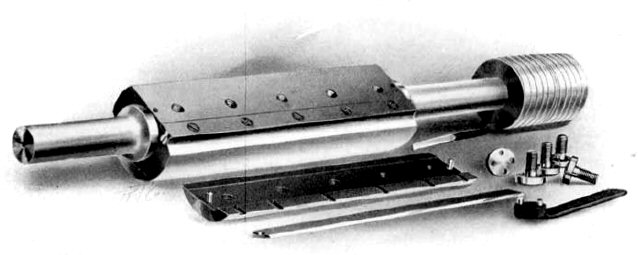 Image showing a clamshell style cutterhead |
Ironically, clamshell cuterheads were often referred to as "safety cutterheads" in old literature. The clamshell cutterhead was is part designed to replace the also dangerous square head which was bad about grabbing items (including arms and hands) and pulling them into the machine. With the theory that a round cutterhead would be less likely to pull a hand into the machine, it was dubbed a "safety head." Unfortunately, engineers at the time did not realize that the design was flawed and could lead to disaster when the clamshells failed. Because of safety issues, the clamshell style of cutterhead is no longer utilized by modern manufacturers.
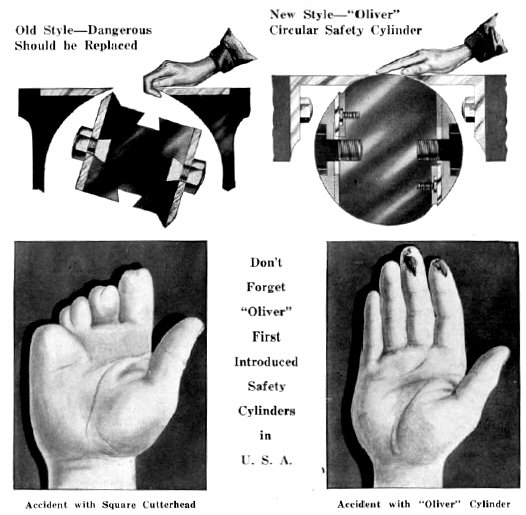 "Oliver" advertisment for their "Safety" cuterhead |
Safety Issues
The problem with a clamshell head is that the knives are directly held in place by the bolt heads. The faster the head spins, the higher the stress on the bolt heads. Hit a knot, and the impact transfers directly to the bolt heads. Now, are the bolts original, never been over-tightened, no stress cracks where the heads meet the stems, made of top-quality steel that was accurately machined and properly heat treated? If you are confident of good answers to all those questions, then your clamshell head should be plenty safe. Otherwise, you are taking chances.
SourceNot only are the knives held in directly by the bolts, but the caps which pinch the knives are also held down by the bolts. The caps are heavy, and under the same forces as the knives. When a bolt fails, usually at one end, the cap bends, hitting the infeed table with considerable force. To reinforce the dangers of clamshell heads, There have been at least three accidents mentioned on the OWWM forums in recent years.
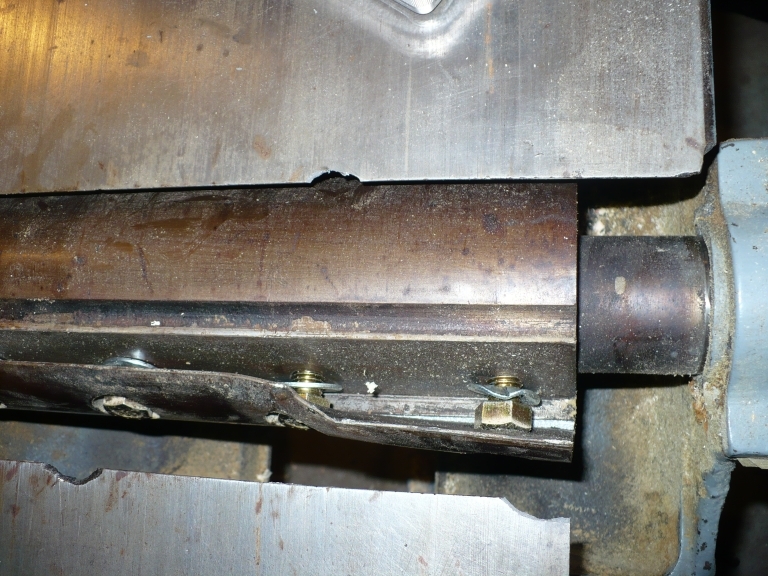 Example of damage from a failed Clamshell Head |
Before trying to determine if a clamshell head is actually safe to use, you must first ask yourself several questions:
- Do you have the kind of equipment that can evaluate the condition of the bolts?
- Do you know they have never been over-tightened? Are you sure you have all of them sufficiently tight?
- Are you sure that the bolts are tightening on the caps and not bottoming out in their holes?
Unfortunately, clamshells are accidents waiting to happen. While many people have used them safely for years, statistically speaking, the longer you run one, the more chance there is of that accident happening. The bottom line is that life is too short to take a chance with a clamshell head that can cause serious injury to anybody nearby when they fail. Even if you are lucky enough to escape a failure without injury, your machine will probably not be so lucky.
One common cause of failure on clamshell heads is caused when the bolts bottom out in the cutterhead. Very often, with years of stress caused by repeated tightening of the bolt as well as centrifugal stresses from high speed spinning, the bolts will "stretch," causing the bolts that sandwich the blades between the cutterhead and the clamshell to bottom out, giving one a false sense of tightness.
sourceMore gory details of concerning Clamshell failures can be read in these threads on the OWWM Discussion Forums:
http://www.owwm.org/viewtopic.php?t=28690 and here
http://owwm.org/viewtopic.php?t=22268Another wide-ranging discussion of clamshell issues such as bolt head size, torque, use of loctite, etc. can be read in this
forum thread.
Examples of Clamshell Heads
Ray Munro and Kirk Poore posted a number of photos of jointer clamshell heads:
SourceOliver Safety Cylinder
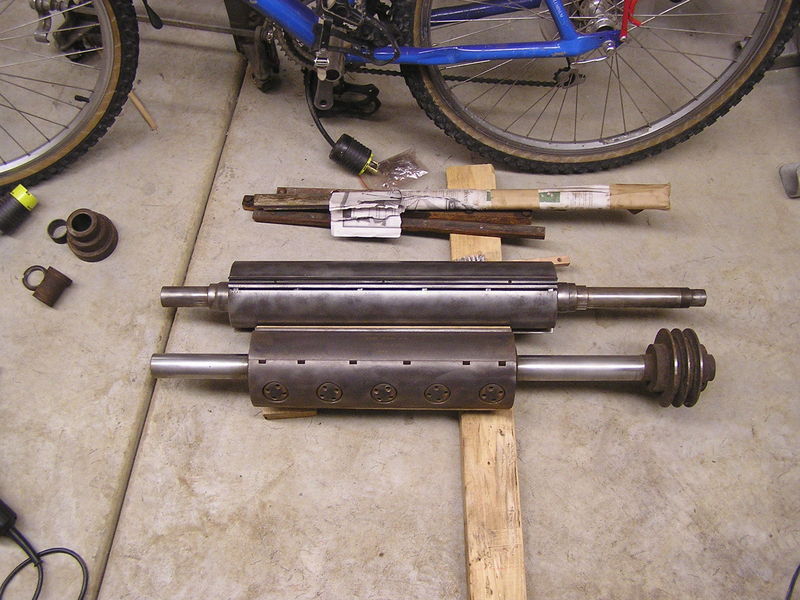
Oliver Clamshell in the front of this picture
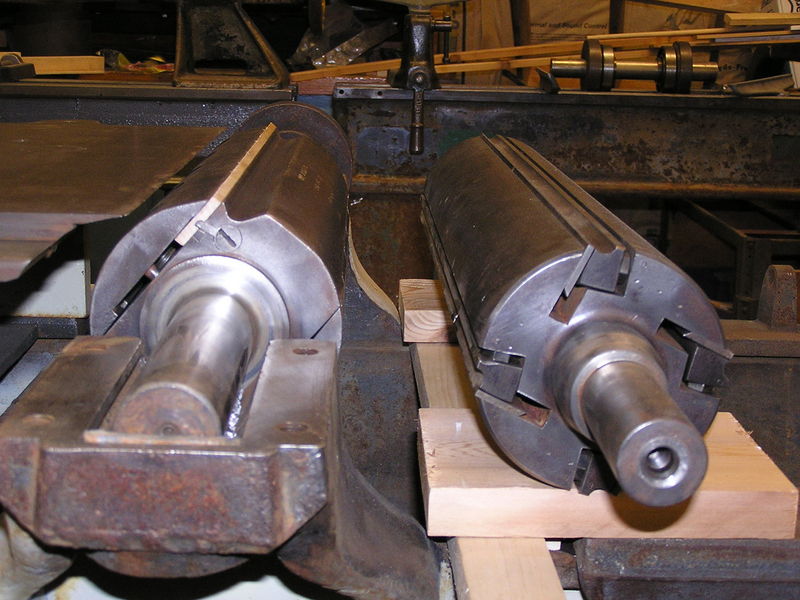
Side view showing the cap. Oliver Clamshell is on the left (wood filler substituting for the knife). SCMI replacement head on the right (with knives in backwards so I do not cut myself)
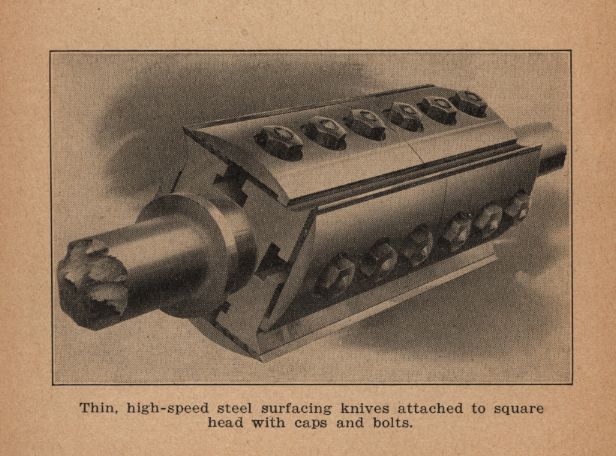
Here is a picture of a square head that is set up to use thin (non slotted knives) with knife caps. The knives are retained by the cap, not the bolts directly. Could be called a "clamshell" I guess.
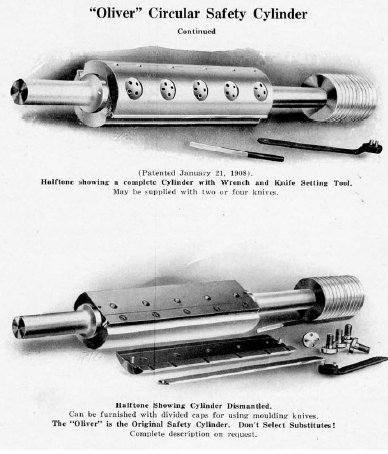
Clamshell illustration from an Oliver Catalog.
Stutzman Head
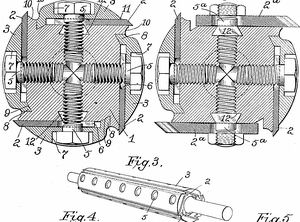
Here is a "Stutzman" head. It can be used as a square head, with slotted knives, or with caps that clamp the knives.
Porter Style "A" Savety Cyliinder
The Porter Style "A" safety cylinder uses a slotted knife and has an unsupported "cap" portion that gives the head a cylindrical profile. The Porter had a replaceable wear strip/chip breaker located at the cutting edge of the knife. The Oliver head incorporated a similar replaceable strip that served as the knife seat and chipbreaker.
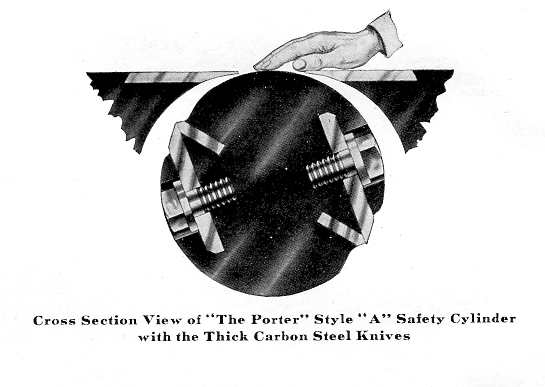
Porter Style "A" safety cylinder
Hall & Brown Clamshell
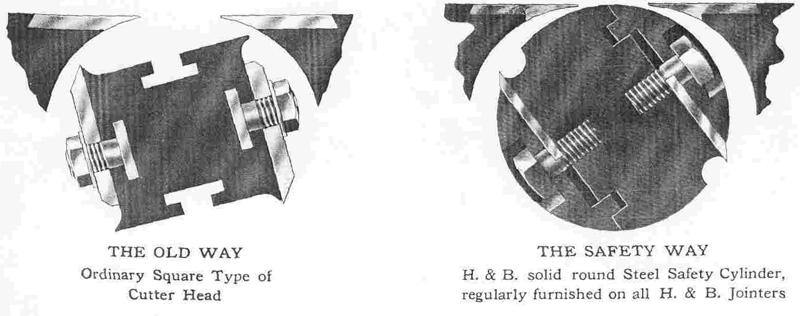
Cross section diagram of a Hall & Brown clamshell, contrasted with a square head.